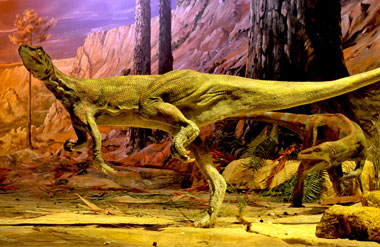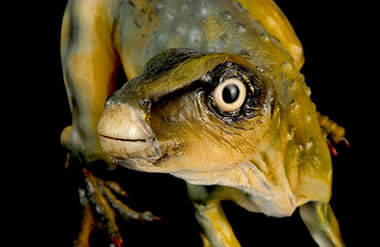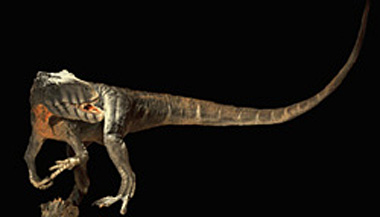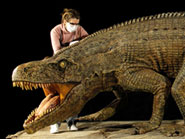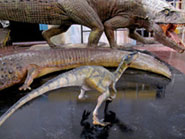UPCOMING PROJECTS » THE FIRST DINOSAURS
THE FIRST DINOSAURS
1 x 52 minute HD
Expected Completion: September, 2010
![]()
In all of our planet's history, the most successful animals ever were the dinosaurs. They once thrived in every part of the world but suddenly disappeared from the Earth. The mystery of their sudden extinction has attracted great popular interest. However, there is another alluring mystery about these creatures. It is about their roots.
Actually, the geographical origin of the dinosaurs has long been ambiguous, but now some new pieces of the puzzle are being discovered. Ischigualasto and Talampaya National Parks in northwest Argentina are known for their landscapes of bizarre rock formations and designated as a world natural heritage site. They are also now becoming recognized as a likely birthplace of the dinosaurs.
Over the centuries, powerful winds have fiercely blown down from the Andes across these lands, carving away at the mountains and plains to expose incredible landscapes. Meanwhile, this erosion has also opened an incredible door into the past, revealing a large quantity of fossils long-buried under the soils. This makes the region a place of great global importance.
The fossils scattering over the area are prehistoric relics dating from the Triassic Period around 230 million years ago. At the time the land was ruled by oddly-shaped, gigantic, tusked reptiles far and wide. It is also known that mammals and dinosaurs made their first appearance on the Earth during this period, but there are few other places in the world where fossils from this period are found in a bulk.
In 1972 an important reptile fossil called Lagosuchus was discovered in the region. Lagosuchus is thought to be a direct ancestor to the dinosaurs. Recently, from the same area, dinosaur fossils in the earliest stages of their evolution were unearthed one after another, placing the region first on the list of possible birthplaces of the dinosaurs.
In the process of their evolution, the dinosaurs diverged into three suborders – theropods, sauropods, and ornithischia. In Ischigualasto and Talampaya National Parks some of the oldest kinds of all these three types of dinosaurs have been discovered. They include; eoraptor, an earliest theropod; panphagia, an ancestor to sauropods; and pisanosaurus, a primitive ornithischian dinosaur species. No fossils of these primitive dinosaurs have been discovered outside of this area.
The Natural Sciences Museum of San Juan has been taking initiative in archeological surveys in the region. The museum is overseeing the excavation works, cleaning unearthed fossils, and creating lifelike reproductions of the dinosaurs based on the analysis of fossil specimens. The dinosaur models are placed in the realistic-looking artificial environment in which they may have lived. The Museum is presenting large-scale dinosaur exhibitions this summer overseas; first in Germany and then in Japan.
In this world recreated by the Museum, you will find that the ruling beasts are not dinosaurs but ancient reptiles. In the dawn of the dinosaurs, it was huge-bodied monsters like Saurosuchus, with the massive jaws measuring one meter in width, and Sillosuchus, characterized by its long neck that wielded the greatest strength and power.
How did the dinosaurs manage to diversify under the overwhelming dominance of these tyrannical reptiles and prevail other land animals to establish their rule in the end?
This program will take viewers to the russet wilderness of northwestern Argentina, where stunning discoveries are being made, and from the extraordinary prehistoric site we set out for an exotic CG safari on a curious exploration back in time to see the queer world of Upper Triassic in Argentina of today and solve mysteries about the deep roots of the dinosaurs and their successful evolutionary diversification.
Note: There are some fossils whose discovery has yet to be announced; these will be added in the coming months as they become available and will be included in the program.










